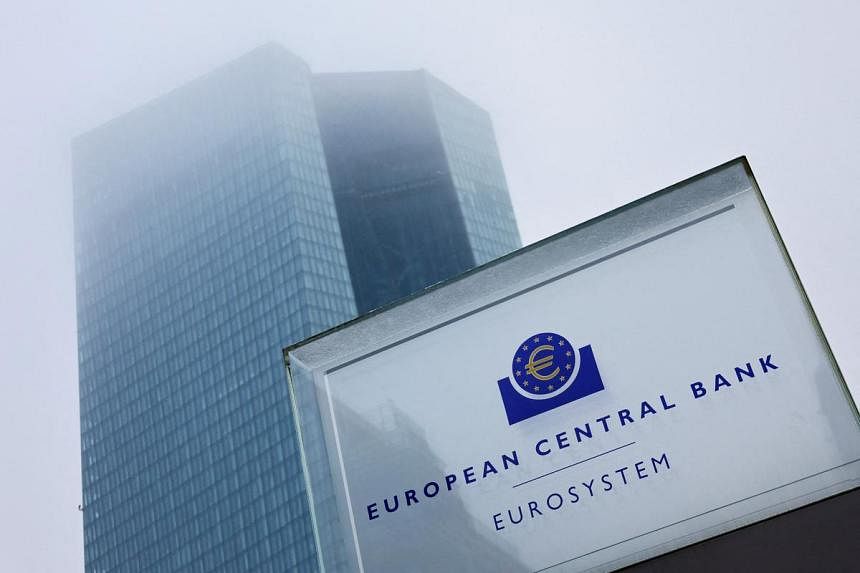FRANKFURT - The European Central Bank (ECB) held borrowing costs at a record high as expected on April 11 but signalled it may soon cut interest rates, even as investors increasingly questioned whether its US counterpart will follow along.
The ECB has kept interest rates steady since September but has long signalled that cuts were coming into view, with policymakers awaiting a few more comforting wage indicators to accompany benign inflation figures before pulling the trigger.
Despite April 10’s hotter-than-expected US inflation print, it underlined that message with new wording in its regular statement on policymakers’ deliberations.
“If the governing council’s updated assessment of the inflation outlook, the dynamics of underlying inflation and the strength of monetary policy transmission were to further increase its confidence that inflation is converging to the target in a sustained manner, it would be appropriate to reduce the current level of monetary policy restriction,” the ECB said.
At a press conference, ECB president Christine Lagarde acknowledged the relevance of developments in the US economy to its policy-setting but also stressed that conditions in the euro zone were different. “We are data-dependent, not Fed-dependent,” she said.
Ms Lagarde said that “just a few” members of the governing council believed it was already time to loosen policy but had agreed to rally to the consensus to wait. She said the bank would have more information and issue new inflation and growth projections in June.
Earlier, the ECB said that incoming information has broadly confirmed its previous inflation assessment, while wage growth was moderating and firms were absorbing more of the labour cost increases via their profit margins. Nevertheless, domestic price pressures were strong and keeping services price inflation high, it noted.
Analysts believe the biggest complication would be if the US Federal Reserve delays its own policy easing to maintain the battle against inflation. The world’s biggest central bank generally sets the tone for global financial markets.
But even that would only slow and not stop the ECB, given a widening gap in performance between the US economy and that of the 20-country euro zone, they argue.
“The ECB will keep a close eye on the Fed. If the Fed doesn’t cut this year, that limits the scope for ECB cuts to perhaps two,” Amsterdam-based AFS Group senior analyst Arne Petimezas said.
After the ECB decision, money markets priced around a 70 per cent chance of a 25 basis point rate cut in June, compared with a roughly 80 per cent chance earlier on April 11.
The currency bloc is now in its sixth straight quarter of economic stagnation, and the labour market is starting to soften.
The US economy, on the other hand, continues to grow above trend, its labour market remains tight and inflation rose more than expected in March, raising the risk of price growth getting stuck.
Markets have priced in 75 basis points of cuts in 2024, or two moves beyond June, which could come in September and December, when the ECB also publishes new economic and inflation projections.
Supporting the case for rate cuts, consumer price inflation fell to 2.4 per cent in March and could ease back to the ECB’s 2 per cent target before the year end, well ahead of the bank’s own 2025 projection.
Meanwhile, rapid wage growth, seen by the ECB as the single biggest inflation threat, is slowing, labour markets are softening, investment is weak and bank lending stagnant – all pointing to a further decline in price pressures. This outlook is in stark contrast to the US, where rate cuts have been priced out in recent weeks given robust labour market data and stubborn price pressures. REUTERS

